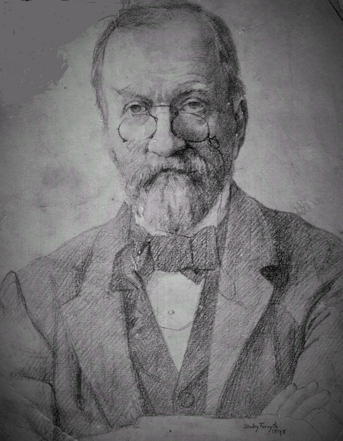
James Forsyth (1827-1910)
....... and the vanishing pulpit
The re-building of St Margaret's Church, Angmering, during 1852/3, left very little of the original church apart from the tower and parts of the chancel, including the chancel arch from the late-12thC / early-13thC. The whole rebuilding project was funded by the squire of Ham Manor, William Gratwicke Kinleside Gratwicke.
A new north aisle added which necessitated new aisle arches on the sides of the Nave, with new roofs over the Nave and the North aisle. Seven new stained-glass windows were added (see http://www.angmeringvillage.co.uk/history/Articles/Church_windows.htm and oak pews installed. A gallery was added over the North aisle but this was later removed by a Faculty granted in 1933.The walls were built using local flint with Caen stone window dressings, inside and out. The floor was laid with encaustic Minton tiles.
The renowned architect, Samuel Sanders Teulon, was appointed to design and oversee the works and he in turn appointed a Mr Cushing of Elmham, Norfolk, as the main contractor. The works included Vestry Cottage, the Vestry Hall, and parts of the William Older Charity School (on the opposite side of the road - now the Library).
Capitals & Memorials
For the new stonework carvings in the re-ordered church, Samuel Teulon, engaged two young sculptors, Scottish-born James Forsyth and Belgian-born Theodore Phyffers, both of whom went on to become eminent sculptors in the later Victorian period. Forsyth and Phyffers entered into a partnership c1850 in London, but the partnership did not last long, being dissolved in 1855.

James Forsyth (1827-1910)
Forsyth and Phyffers carved all the column capitals and corbels that can be seen today excluding the chancel arch which survives from the 13th century. Some examples of their work are shown below, which the Sussex Express of the time described as "very rich, representing only natural plants":
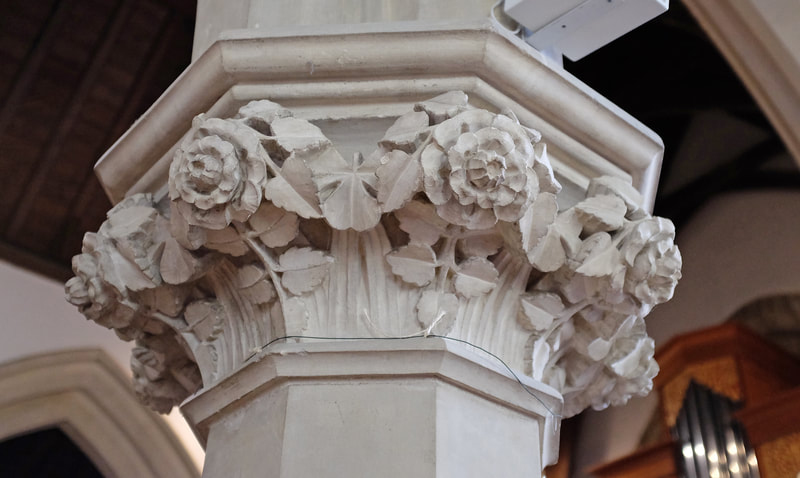 ...
...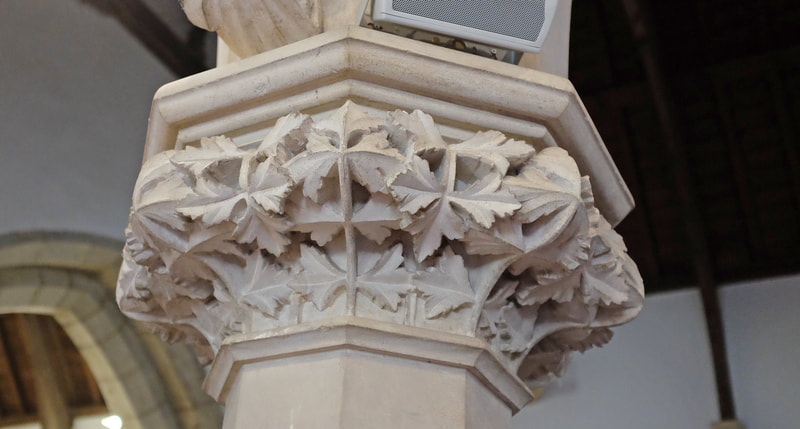
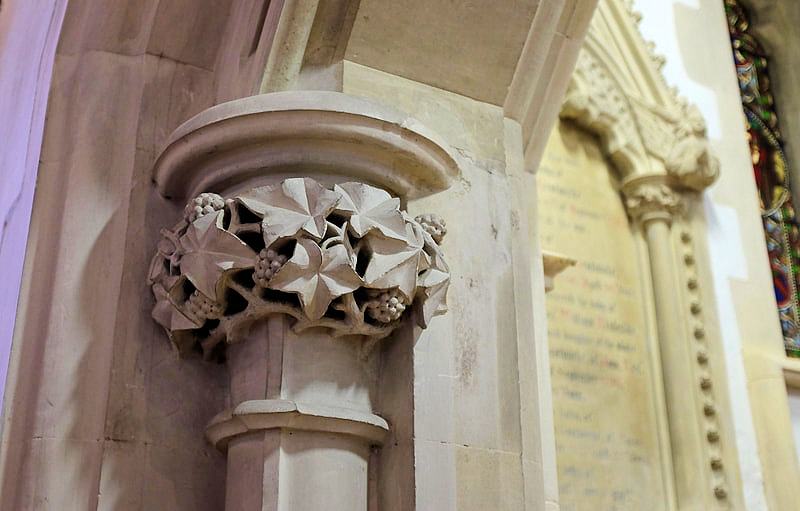 ...
...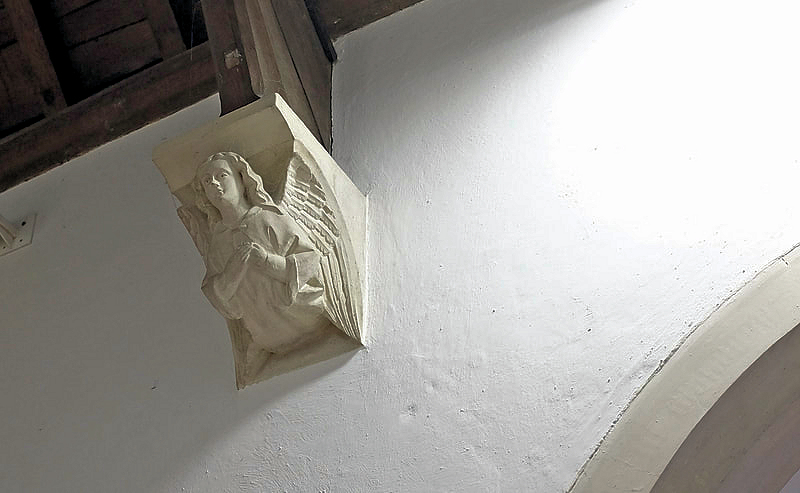
Village lore has it that, while the sculptor of the capital to the left of the organ pipes was working, a robin would visit each day and perch nearby. So, with permission, he carved this robin in a location where it was not obvious (see photo). It was probably not painted at the time. It is not recorded whether the robin was carved by James Forsyth or by Theodore Phyffers.
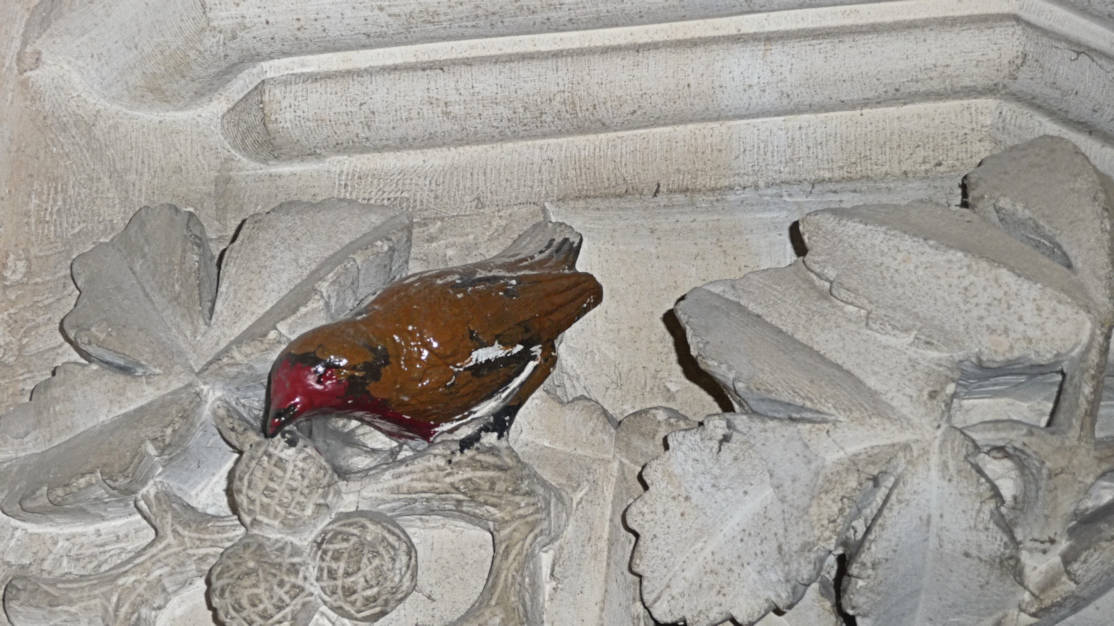
They also carved surrounds to memorials of ancestors of WGK Gratwicke that can be found within the church:
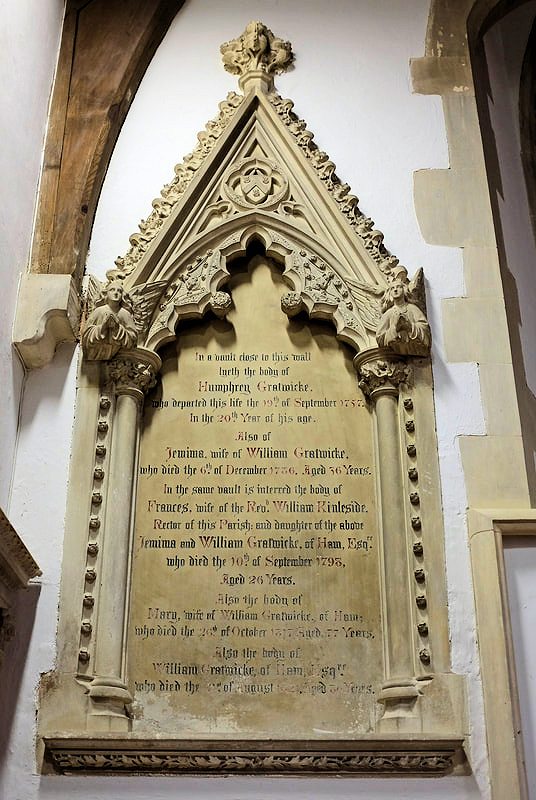
The Pulpit (and its disappearance)
Following the re-ordering of St Margaret's in 1852/3, James Forsyth was approached to sculpt a pulpit to complement the interior carving he and Theodore Phyffers had performed earlier. By that time, his partnership with Phyffers had been dissolved.
The result was this wonderful pulpit that was installed in 1857:
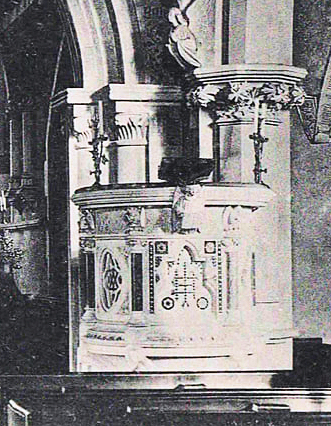
The pulpit was made of Caen stone and alabaster, with columns dressed in Devonshire marble, and panels of stained glass mosaic worked in red, blue, and gold. The carved figures followed the Epistles for Trinity Sunday with four beasts represented as written in Revelation 4.7:
"And the first beast was like a lion, and the second beast like a calf, and the third beast had a face as a man, and the fourth beast was like a flying eagle". (Revelation 4.7)
The pulpit stood proudly at the front of the Nave until 1911 when it was said to have disappeared overnight to villagers' anger and replaced by a wooden one which Lady Aubrey Fletcher had commissioned the previous year in memory of her husband, Sir Henry Aubrey Fletcher, 4th Baronet, who had died the previous year. In fact, Lady Aubrey Fletcher and St Margaret's had obtained a Faculty for the pulpit's replacement, but seemed shy of announcing the fact to villagers.
Sir Henry was the squire of Ham Manor. He was also MP for various Sussex constituencies from 1880 to 1910, a Privy Councillor, JP, and a Deputy Lieutenant of Sussex. He was educated at Eton and served in the Grenadier Guards before commanding the 2nd Battalion of the Royal Sussex Regiment Volunteers. For various periods he was a parish and county councillor and chairman of the East Preston Board of Guardians. He was Groom-in-Waiting to Queen Victoria in 1885/6 and the rector's churchwarden at St Margaret's for over 40 years. He was appointed as a Freeman of the Borough of Worthing in 1901. Such was his esteem that an estimated 2000 people came to pay their respects at his funeral in 1910.
Such was the significance of Sir Henry, it is perhaps easy to understand why Lady Aubrey Fletcher was able to influence the church authorities to instal a new pulpit which was arguably inferior, although tastes for Gothic architecture may well have been on the wane in the early 20th century.
Initially, the stone pulpit was offered to St James the Great Church in Littlehampton, but the offer was not taken up. For the next 70 years it is said its location was unknown, but a local newpaper article from 1911 stated clearly that it had been presented to Rye Harbour Church, East Sussex. Notwithstanding that, in the 1990s, the pulpit was 'rediscovered' in the Church of the Holy Spirit in Rye Harbour and remains there today (see photo below):
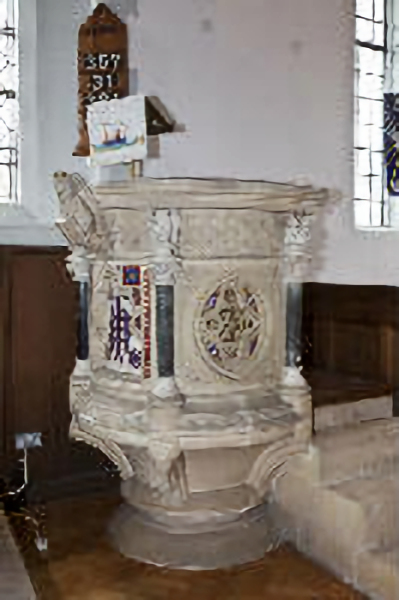
Neil A Rogers-Davis
09 October 2023
Acknowledgments:
To: Rob J
Cocklin - for the information on his website on James Forsyth and Theodore
Phyffers, the photos of the capital carvings, and the Gratwicke memorial
surrounds in St Margaret's Church.
To: Bernice Forsyth - for the portrait
of James Forsyth at the age of 70, drawn by his son John Dudley Forsyth.
To: St Mary's Church, Rye - for the photo of the pulpit in the Church of
the Holy Spirit in Rye Harbour.
To: St Margaret's Church, Angmering - for
allowing photos to be taken within church.
References
The Sussex Express,
6 April 1953.
The Builder, 25 October 1856
Local newspaper cutting of 12
February 1911
Sussex County Magazine, 1941
Guide to the Church of St
Margaret, Angmering, 1955
Article by Colin Davis in St Margaret's Parish
Magazine
The Forsyth Brothers website, 2023
http://www.theforsythbrothers.com/
St Mary's Church, Rye
website, 2023
https://www.ryeparishchurch.org.uk/ryeharbourchurch.htm
Photo
of robin on capital by author - taken in 2009